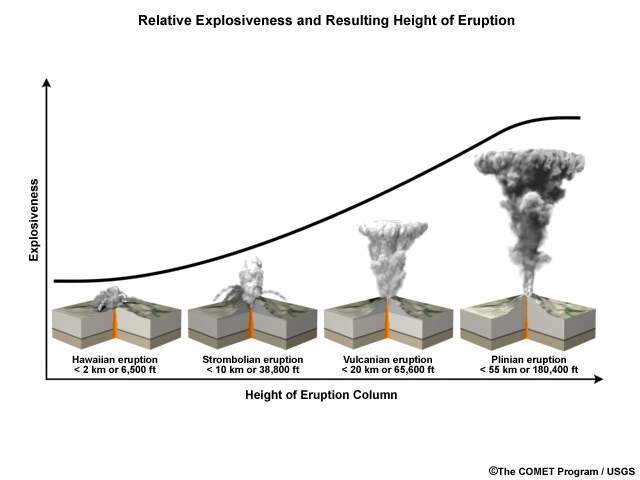Classification of Volcanic Eruptions
How high does ash need to rise before impacting aviation?
It depends. Long travelling aviation is impacted by eruptions that project ash to 25,000 ft (7.6 km) and above. If the eruption is near an airport, the impact starts at the surface.
Volcanic eruptions form a continuum from small quiet affairs to large explosive catastrophes. Volcanologists have developed many schemes to categorize eruptions. Since the focus of this module will be on the more explosive types that, potentially, impact aviation, climate, maritime, and society through the expulsion of volcanic ash and gases, the meteorologist should be familiar with these four eruption types:
- Hawaiian
- Strombolian
- Vulcanian
- Plinian
Note: A volcano commonly displays a distinctive pattern of behavior and its eruption is often labeled with the name of a more well-known volcano that displayed similar characteristics. Furthermore, while some volcanoes may exhibit only one characteristic type of eruption during an interval of activity; others may display the entire range of types.

